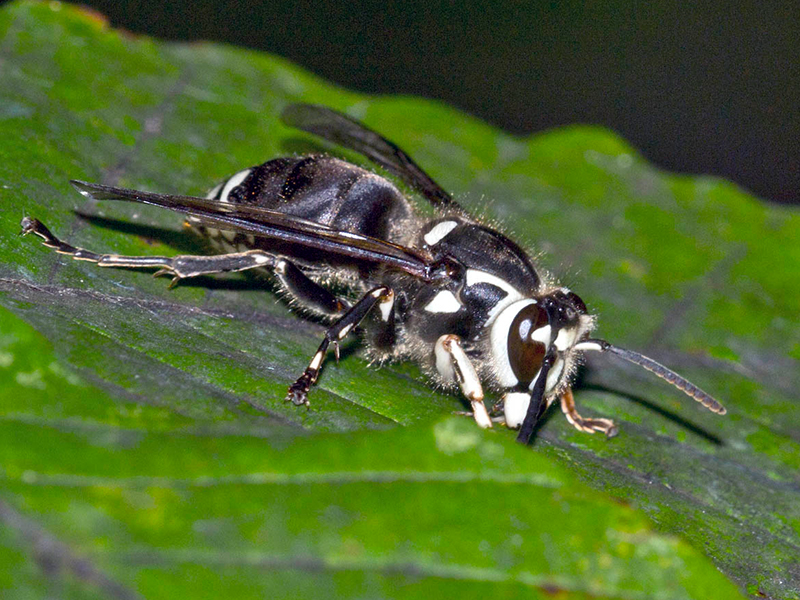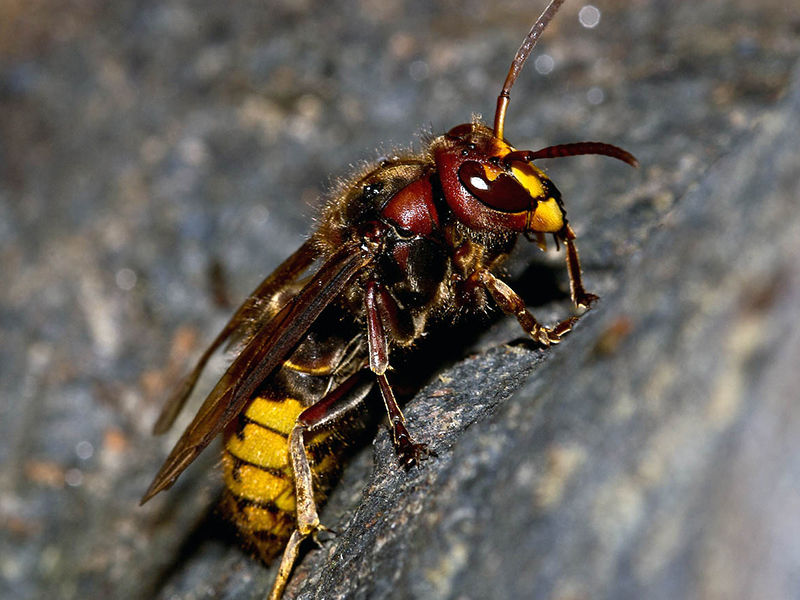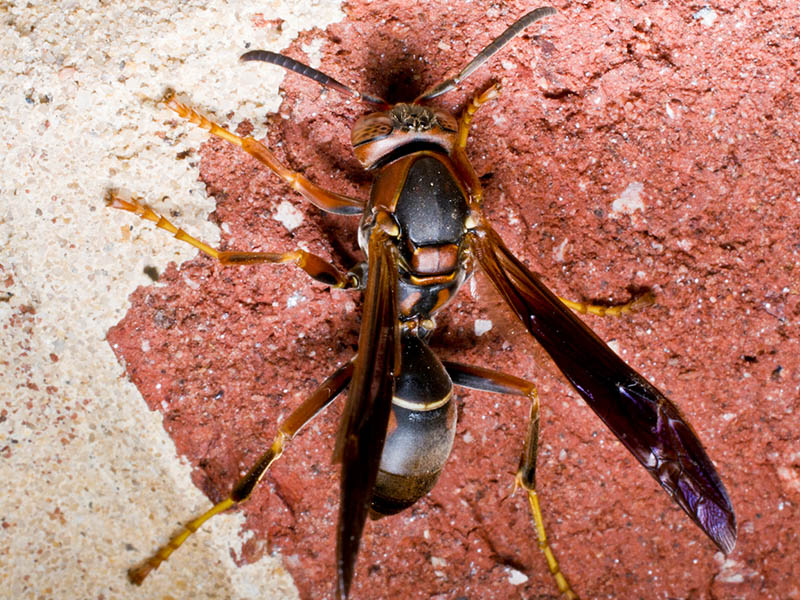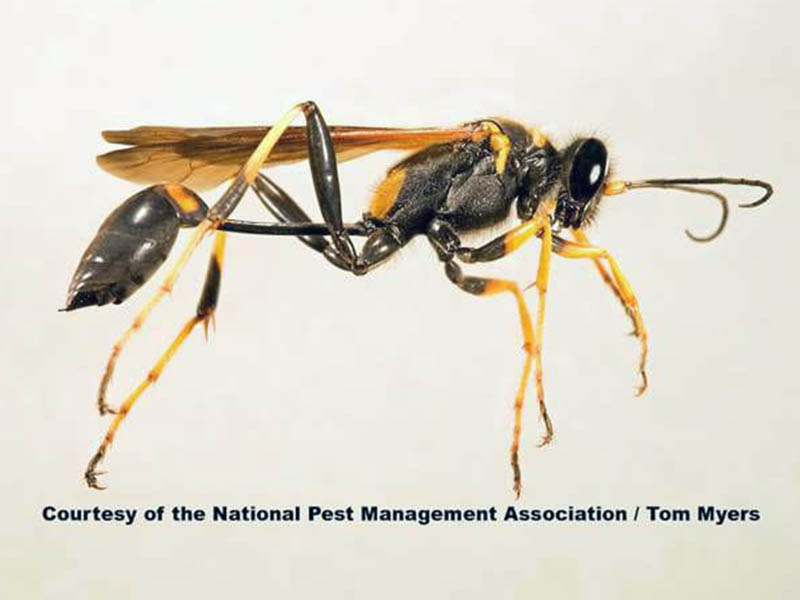Stinging Insects

Yellowjacket
Found throughout the U.S., yellowjackets have a characteristic yellow and black banded coloration. These flying insects feed on sugary substances and often linger at outdoor gatherings while foraging for sweets. Although yellowjackets are not quick to sting, they are territorial and will attack if a nest is threatened. Look out for their paper carton nests, especially in attics or the eaves of houses. Yellowjackets can also build underground nests, which have a small entrance hole and are harder to identify.

Bald-faced Hornet
Although not technically a hornet, the bald-faced hornet is known for its aggressive nature and large size. This relative of the yellowjacket is mostly black in color with a white-patterned face. Also found throughout the U.S., bald-faced hornets build enclosed, paper-like nests at least three feet off the ground. Nests are usually suspended from trees, shrubs, overhangs, utility poles, and other structures. Unlike other stinging insects, bald-faced hornets do not reuse their nests and will rebuild each season.

European Hornet
This stinging insect from Europe arrived in New York in the 1800s. Also called giant or brown hornets, European hornets are now found in 31 states from the eastern seaboard west to the eastern Dakotas and south through Iowa and Illinois to New Orleans. The large brown hornets have long bodies with yellow abdominal striping and, unlike other stinging insects, may be active at night. European hornets build nests in hollow trees, attics, porches, and inside walls. They’re attracted to light and are known to fly into bright windows at night.

Paper Wasp
As their name suggests, paper wasps build nests from paper-like material. Their distinctive umbrella-shaped dwellings are typically found hanging from trees, porch ceilings, railings, and the tops of window and doorframes. Paper wasps look similar to yellowjackets but are slimmer and mostly brown in color – with hints of yellow or red – depending on the species. Living throughout the U.S., these wasps reside in small colonies and aren’t usually aggressive unless a nest is disturbed.

Mud Dauber
Mud dauber is the common name for many species of wasps that build nests with mud. Found all over the U.S., these insects are predominantly black in color but may have pale or lustrous markings. Commonly found in garages, sheds, and other sheltered sites, mud dauber nests look like a series of tubes constructed side by side. If the nest has holes, it is likely inactive, as the wasps create holes when they leave the nest. Mud daubers do not defend their nests and rarely sting, but more aggressive wasp species are apt to take over their old nests.
How can I prevent stings?
Avoid getting stung by keeping your property free from stinging insect nests. Seal cracks and crevices in buildings, keep windows and doors screened, and regularly examine the exterior of your home for signs of infestation. Closely inspect overhangs, shrubs, trees, decks, and sheds. If you find a nest, do not attempt to remove it on your own. Contact a licensed pest control professional to determine the safest way to remove the threat.
When gathering outdoors, deter stinging insects by covering food and drinks and storing garbage in sealed containers. Refrain from wearing perfume, scented lotion, and other fragrant products that attract pests. Avoid swatting yellowjackets, hornets, and wasps that are bothering you and instead, slowly walk away from the area. Taking these extra precautions will help keep you and your family safe from stings.